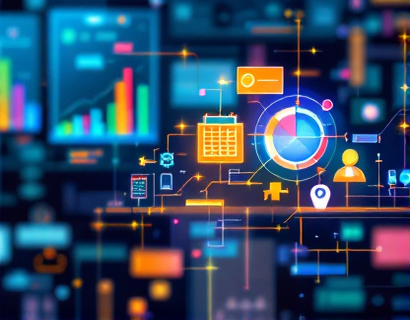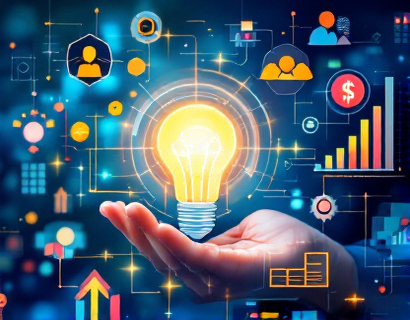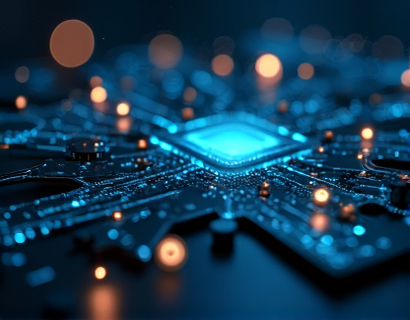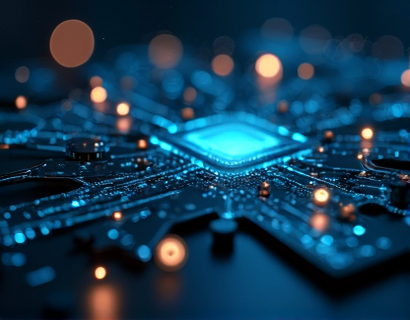Transforming Ucosystem Engagement: Harnessing the Power of Crypto and AI
The intersection of cryptocurrency and artificial intelligence (AI) is revolutionizing the way we engage with digital ecosystems. This synergy is not just a technological marvel but a strategic opportunity for businesses and individuals alike to enhance their digital presence, drive growth, and foster deeper connections within the evolving tech landscape. This article delves into the transformative potential of combining these two powerful forces, offering insights and strategies for maximizing digital engagement and innovation.
Understanding Cryptocurrency and AI
Cryptocurrency, often referred to as digital or virtual currency, operates on blockchain technology, a decentralized ledger that ensures transparency, security, and immutability. Bitcoin, launched in 2009, was the first and most well-known cryptocurrency, but the space has since expanded to include thousands of altcoins, each with unique features and use cases. Beyond being a medium of exchange, cryptocurrencies are increasingly being used as a store of value and a means to facilitate decentralized applications (dApps).
Artificial intelligence, on the other hand, encompasses a range of technologies designed to simulate human intelligence processes such as learning, reasoning, and self-correction. AI algorithms can analyze vast amounts of data, identify patterns, and make predictions or decisions with minimal human intervention. The integration of AI into various sectors, from healthcare to finance, has led to significant advancements and efficiency gains.
Synergy Between Crypto and AI
The combination of cryptocurrency and AI creates a powerful synergy that can transform digital ecosystems. One of the primary areas where this synergy shines is in decentralized finance (DeFi). DeFi platforms leverage AI to enhance trading algorithms, risk management, and automated market operations. These platforms offer financial services such as lending, borrowing, and yield farming, all powered by smart contracts and AI-driven insights.
Another critical area is data security and privacy. Blockchain's inherent security features, combined with AI's advanced encryption and anomaly detection capabilities, can create robust systems that protect user data and ensure compliance with regulations. This is particularly important in industries like healthcare and finance, where data privacy is paramount.
Enhancing User Engagement Through Smart Technology
Digital ecosystems thrive on user engagement, and the integration of crypto and AI can significantly enhance this aspect. Smart technology innovations, such as tokenization, allow for the creation of digital assets that represent real-world objects or rights. These tokens can be used to incentivize user participation, reward loyalty, and create new revenue streams. For instance, a digital content platform can issue tokens to reward creators and engage viewers, fostering a more interactive and rewarding experience.
AI-driven personalization is another key factor. By analyzing user behavior and preferences, AI can tailor content and services to individual needs, increasing satisfaction and retention. This level of personalization is particularly effective in crypto-driven ecosystems, where users are often tech-savvy and value autonomy and control over their digital assets.
Maximizing Digital Engagement with AI-Powered Analytics
One of the most significant advantages of combining crypto and AI is the ability to leverage advanced analytics for insights. AI algorithms can process and analyze large datasets to identify trends, predict user behavior, and optimize marketing strategies. For digital ecosystems, this means more targeted campaigns, higher conversion rates, and a better understanding of user demographics and preferences.
Blockchain technology ensures that these analytics are transparent and secure, as data is stored in a decentralized manner and cannot be tampered with. This transparency builds trust among users, who are more likely to engage with platforms that prioritize data integrity and privacy.
Smart Contracts and Automated Processes
Smart contracts, self-executing contracts with the terms directly written into code, can automate various processes within digital ecosystems. These contracts eliminate the need for intermediaries, reducing costs and increasing efficiency. For example, in a gaming ecosystem, smart contracts can manage in-game purchases, distribute rewards, and ensure fair play, all without human intervention.
AI can further enhance the functionality of smart contracts by providing predictive analytics and real-time adjustments. For instance, an AI system can monitor game performance and automatically adjust difficulty levels or reward structures based on user feedback and engagement metrics.
Tokenomics and Community Building
Tokenomics, the study of token economics, plays a crucial role in building and maintaining a vibrant community within digital ecosystems. By designing tokens with specific utility and distribution models, platforms can create a balanced ecosystem where users, creators, and investors all have a stake in the platform's success. AI can assist in optimizing token distribution strategies, ensuring that tokens are allocated to those who contribute most to the ecosystem's growth and engagement.
Moreover, AI-driven chatbots and virtual assistants can enhance community support, providing 24/7 assistance and fostering a sense of belonging among users. These tools can handle common queries, facilitate peer-to-peer interactions, and even organize community events, all contributing to a more engaged and active user base.
Challenges and Considerations
While the potential benefits are substantial, there are challenges to consider when integrating crypto and AI in digital ecosystems. Regulatory uncertainty remains a significant hurdle, as governments worldwide are still grappling with how to regulate these emerging technologies. Compliance with existing laws and anticipation of future regulations are crucial for sustainable growth.
Another challenge is the technical complexity involved in implementing and maintaining these systems. Developers need to possess a deep understanding of both blockchain and AI to create robust and secure solutions. Continuous education and collaboration within the tech community are essential to overcome these technical barriers.
Future Prospects
The future of digital ecosystems lies in the seamless integration of cryptocurrency and AI. As technology advances, we can expect more innovative applications and use cases. For instance, the rise of Web3, a decentralized internet powered by blockchain, AI, and other emerging technologies, promises a more user-centric and secure online experience.
In this Web3 landscape, users will have greater control over their data and digital identities, and platforms will be more resilient and transparent. The synergy between crypto and AI will continue to drive growth, innovation, and engagement, making digital ecosystems more dynamic and valuable.
In conclusion, the combination of cryptocurrency and AI offers a transformative path for digital ecosystems. By leveraging these technologies, businesses and individuals can enhance user engagement, drive growth, and stay ahead in the rapidly evolving tech landscape. Embracing this synergy is not just an option but a necessity for those looking to thrive in the digital age.











































